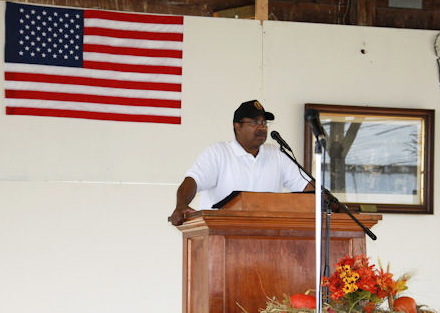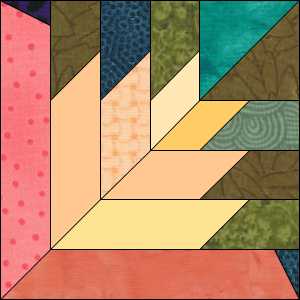Broom peddler, New York
When we consider how 19th-century quilters obtained their fabrics
we tend to forget the peddler.
Peddlers served urban and rural customers.
In the city a retailer could specialize.
Here a pots and pan specialist in New York
in the 1930s. Photo by Berenice Abbot.
Boston, about 1900
About 1860
In the rural areas a peddler might stock a general store.
In her diary Sarah Waldsmith Bovard of Scott County, Indiana,
recorded her visits to the peddler right before the Civil War. She
and her neighbors bought baskets, yarn, coffee and sugar from a traveling store.
"March 24 1859: A peddler comes by and Mrs. P. buys some oil
cloth."
Her entries give us a little insight into how the rural retail exchange occurred.
A peddler's card announcing his schedule.
"I am coming June 20th"
"April 7, 1859. Cool, quite windy. James sows oats and I go to Mrs. Spears
to the peddler. Get some sugar and coffee"
Apparently she knew when he would be at the neighbor's. He might have left cards like the above.
In September:
"Here we go, James and I to Mr. Foster to the house raising.
Cool cloudy. We have a fine time. I come home at noon, then go to Catherines to
the peddler, he does not come."
Brooms and baskets for cash and barter
Perhaps a broken appointment.There were other problems too:
In October:
"I start to the peddler but do not go all the way--he did not
have no cotton yarn."
She might have heard he was out of yarn from a friend returning empty-handed.
Read more of her diary here:
The Peddler's Wagon from Harper's Weekly in 1868.
A detail shows he is holding up a textile---
A whole-cloth quilt, a plaid tablecloth?
Peddler, early 20th century
A Colorado resident recalled a "dry goods store on wheels...fitted with drawers and cupboards...The storekeepers in Walden, Laramie and Fort Collins didn't like him; for he'd not only undersell them he'd deliver."
Peddlers also took to rivers. About 1820 Jerry Church bought 250 yards of "domestic cotton goods" in Cincinnati and went into partnership with a man who owned a "small store-boat on the Ohio River". Their boat carried "calicos, domestic cottons, and some grocery and ...teapots, pitchers, jugs, and anything that would make a show like a store; and after having arranged them pretty fair, we raised a flag on a pole with the name of store-boat wrote upon it."
"We stopped at every little town or village...as we passed along the Kentucky or Indiana shore."
Some peddlers walked with a yoke holding their goods.
I wouldn't want to sell calico on foot.
Maybe needles or watches.
UPDATE: Years Later: Memory of the Tinkerman in 2020.
Eunice Anne Fowler told us at the QuiltHistorySouth Facebook page that she recalled being at her
grandmother's, Eunice Howell, Selmer, Tennessee, when the Tinkerman came. She bought fabric from him, as well as thread, & kitchen and household needs. She made most of their clothing, aprons etc.






























































